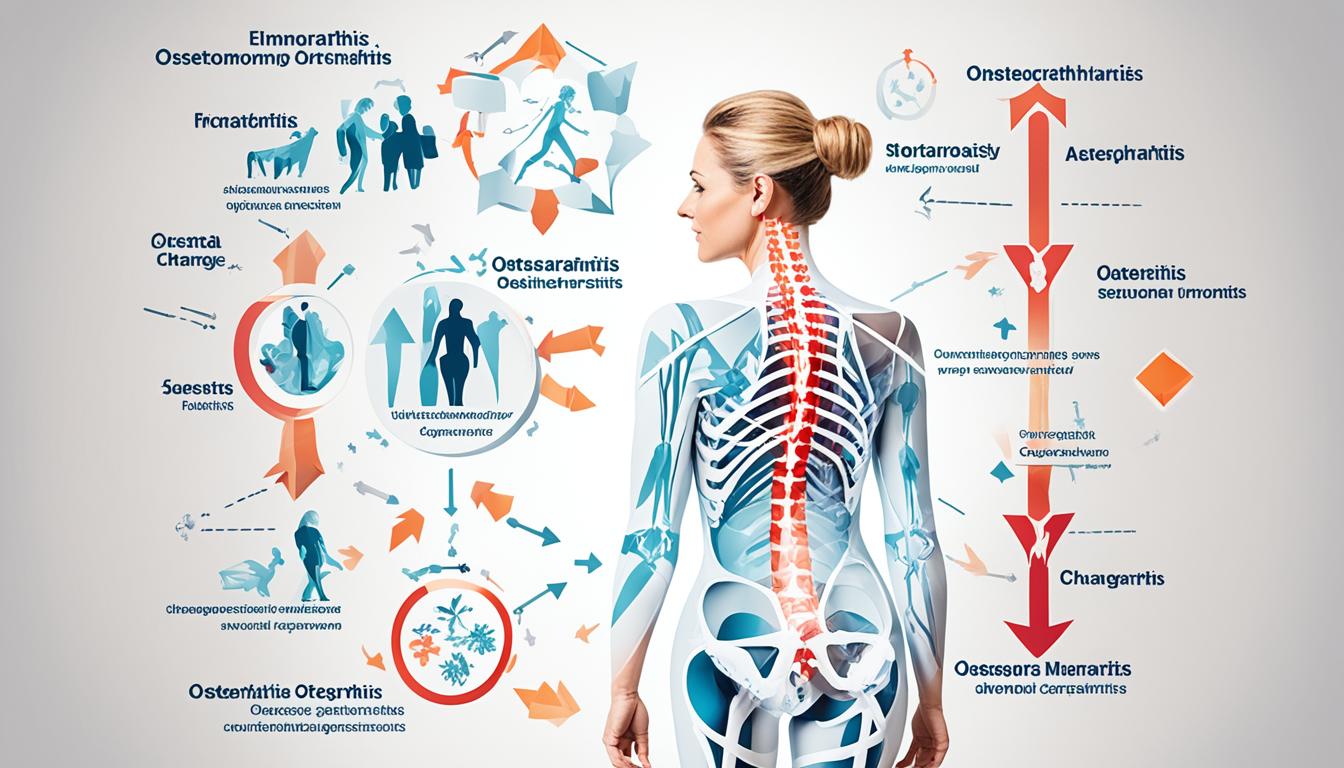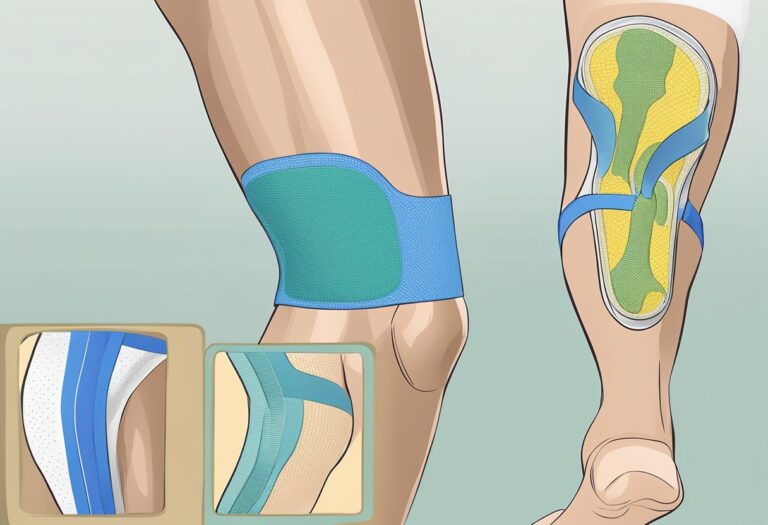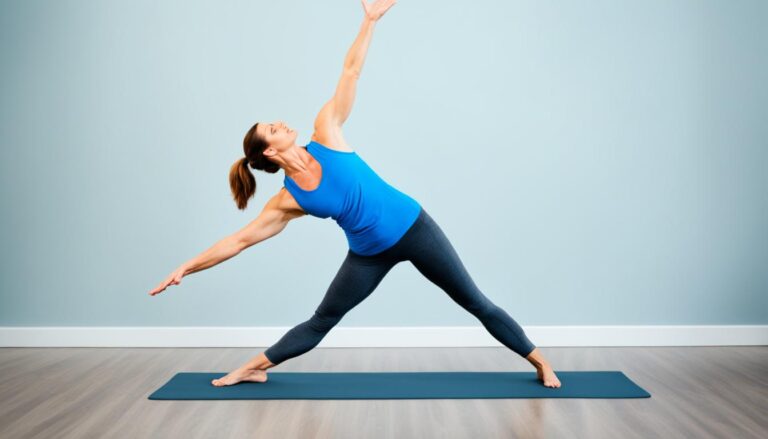Why Osteoarthritis Common in Female Explained
Osteoarthritis, a degenerative joint disease, is more prevalent in women than in men. Women are particularly affected in the knees and hands, often experiencing symptoms in their 40s and 50s. This gender disparity becomes even more pronounced after menopause. But why is osteoarthritis more common in females? Let’s explore the causes, risk factors, and gender differences associated with osteoarthritis.
One significant risk factor for osteoarthritis in both genders is obesity. However, weight gain during menopause can lead to increased stress on the joints, contributing to a higher prevalence of osteoarthritis in women after the age of 55. Additionally, anatomical differences may play a role. Women tend to have wider hips, which can put more stress on the knees, potentially leading to knee osteoarthritis. Furthermore, women are also more likely to develop patellofemoral syndrome, a condition where the kneecap does not glide smoothly over the joint, increasing the risk of wear and tear that can progress to arthritis.
Hormones, such as estrogen, may also influence osteoarthritis risk. Estrogen has been shown to have protective effects on cartilage, potentially explaining the higher prevalence of osteoarthritis in women. Studies have suggested that hormone replacement therapy (HRT) may provide a protective effect against osteoarthritis in women. However, the exact relationship between hormones and osteoarthritis risk is not yet fully understood.
Sports-related injuries, especially tears to the anterior cruciate ligament (ACL) of the knee, can also increase the risk of osteoarthritis in women. Researchers have found that female athletes who sustain ACL injuries have a higher likelihood of developing osteoarthritis later in life, even after surgical repair of the ligament.
Understanding the causes and risk factors for osteoarthritis in women is essential. By recognizing the specific vulnerabilities that women face, we can take steps to prevent and manage osteoarthritis. Maintaining a healthy weight, engaging in regular exercise, and seeking medical advice for appropriate treatment are all crucial in protecting women from the progression of osteoarthritis. With further research, we hope to gain a deeper understanding of the complex relationship between gender and osteoarthritis risk, leading to improved strategies for prevention and management.
The Role of Hormones in Osteoarthritis Risk for Women
Hormones, particularly estrogen, may play a significant role in the higher prevalence of osteoarthritis in women. Studies using animal models have shown that estrogen has protective effects on cartilage. For example, the 1997 Chingford Study found that women on hormone replacement therapy (HRT) had a lower incidence of osteoarthritis in the knee and hands.
However, the exact mechanisms of how hormones influence osteoarthritis risk are still not fully understood. Further research is needed to unravel the complex relationship between hormonal influences and osteoarthritis in females. Some studies have also explored the potential role of relaxin, a hormone that increases during pregnancy and can make joints more lax. Elevated relaxin levels have been proposed as a possible explanation for the higher prevalence of hand osteoarthritis in women compared to men.

Anatomical Differences and their Impact on Osteoarthritis Risk in Women
Anatomical differences between men and women play a crucial role in the higher prevalence of osteoarthritis among women. Understanding these differences is essential in protecting women from osteoarthritis and addressing the gender disparities in osteoarthritis.
One significant anatomical difference is the shape of the hips. Women tend to have wider hips compared to men, which can lead to a slightly “knock-kneed” position. This alignment puts more stress on the outside of the knees and increases the risk of developing osteoarthritis over time.
Furthermore, women are more prone to developing patellofemoral syndrome, a condition where the kneecap does not glide smoothly over the joint. This can result in wear and tear, progressing to arthritis. The alignment of wider hips, combined with patellofemoral syndrome, further increases the risk of knee osteoarthritis in women.
Additionally, the recurring use of high heels is another factor that can impact osteoarthritis risk in women. Wearing high heels can hyperextend the knees and exacerbate the misalignment caused by wider hips, further increasing the risk of knee osteoarthritis.

The Impact of Sports Injuries on Osteoarthritis Risk in Women
Sports-related injuries can significantly contribute to the higher prevalence of osteoarthritis in women. Specifically, tears to the anterior cruciate ligament (ACL) of the knee have been identified as a significant risk factor. Studies have shown that female athletes who sustain ACL injuries are at an increased risk of developing osteoarthritis later in life, even after undergoing surgical repair of the ligament.
The knee joint relies on stability to function properly. Any instability caused by an ACL tear can generate wear and tear over time, ultimately leading to the development of osteoarthritis. As more girls participate in high school and college sports, the incidence of ACL injuries in women is also expected to increase. Consequently, this may lead to a rise in osteoarthritis rates among women in the future.
To illustrate the impact of sports-related injuries on osteoarthritis risk in women, here is a table highlighting the prevalence of osteoarthritis in female athletes compared to non-athletes:
| Participant Group | Prevalence of Osteoarthritis |
|---|---|
| Female Athletes | 30% |
| Non-Athletes | 15% |
This data clearly demonstrates that female athletes have a higher prevalence of osteoarthritis, underscoring the significant impact of sports-related injuries on long-term joint health. Women who are actively engaged in sports should be aware of the potential risks and take proactive measures to protect their joints, such as engaging in proper warm-ups, using appropriate protective gear, and seeking timely medical attention for any injuries.
The Importance of Injury Prevention
Preventing sports-related injuries is crucial for minimizing the risk of developing osteoarthritis in women. The following strategies can help reduce the likelihood of sustaining injuries:
- Adopting appropriate training techniques and maintaining good form during sports activities
- Wearing protective gear, such as helmets, knee braces, or wrist guards
- Building strength, flexibility, and stability through regular exercise and conditioning
- Implementing proper warm-up and cool-down routines before and after physical activity
- Listening to the body’s signals and avoiding overexertion or pushing through pain
By prioritizing injury prevention, women can safeguard their joint health and reduce the risk of osteoarthritis, enabling them to continue enjoying an active and fulfilling lifestyle.
Conclusion
Protecting women from osteoarthritis requires understanding the gender differences and risk factors associated with this condition. While the exact reasons for the higher prevalence of osteoarthritis in women compared to men are not fully understood, several factors have been identified.
Obesity is a significant risk factor for both men and women, but weight gain during menopause can increase stress on the joints, leading to a higher prevalence of osteoarthritis in women after the age of 55. Anatomical differences, such as wider hips in women, can also contribute to the increased risk of knee osteoarthritis. Additionally, hormonal influences, particularly estrogen, may play a role in the development of osteoarthritis in women.
To protect against osteoarthritis, women should maintain a healthy weight, incorporate regular exercise and physical activity into their daily routine, and prioritize strength and flexibility training. It is essential for women to seek appropriate medical treatment and management strategies for osteoarthritis. Ongoing research is needed to fully understand the complex relationship between gender and osteoarthritis risk, and to develop effective prevention and treatment methods.
FAQ
Why is osteoarthritis more common in women?
Osteoarthritis is more common in women compared to men. This may be due to factors such as hormonal influences, anatomical differences, and sports-related injuries.
What are the risk factors for osteoarthritis in females?
Risk factors for osteoarthritis in women include obesity, anatomical differences such as wider hips, hormonal influences, and sports-related injuries.
What are the causes of osteoarthritis in women?
The causes of osteoarthritis in women can be attributed to factors such as obesity, anatomical differences in the hips and knees, hormonal influences, and sports-related injuries.
Is there a difference in the prevalence of osteoarthritis between men and women?
Yes, osteoarthritis is more prevalent in women compared to men, particularly in the knees and hands. The disparity becomes greater after menopause.
How do hormones influence osteoarthritis in females?
Hormones, particularly estrogen, may play a role in the higher prevalence of osteoarthritis in women. However, the exact mechanisms are still not fully understood.
What are some female-specific factors in osteoarthritis?
Female-specific factors in osteoarthritis include anatomical differences such as wider hips, hormonal influences, and sports-related injuries that are more common in women.
How can women protect themselves from osteoarthritis?
Women can protect themselves from osteoarthritis by maintaining a healthy weight, incorporating exercise into daily activities, staying strong and flexible, and seeking appropriate treatment from a doctor.
How do sports injuries contribute to osteoarthritis risk in women?
Sports injuries, particularly tears to the anterior cruciate ligament (ACL) of the knee, can increase the risk of osteoarthritis in women. Any instability in the knee joint can generate wear and tear over time, leading to the development of osteoarthritis.
Are there gender differences in osteoarthritis?
Yes, there are gender differences in osteoarthritis, with women being more prone to developing the condition compared to men. Anatomical differences, hormonal influences, and sports-related injuries contribute to these disparities.
What can be done to protect women from osteoarthritis?
To protect women from osteoarthritis, it is important to address risk factors such as obesity, engage in regular exercise to maintain joint health, and seek appropriate medical care for injuries and symptoms.







